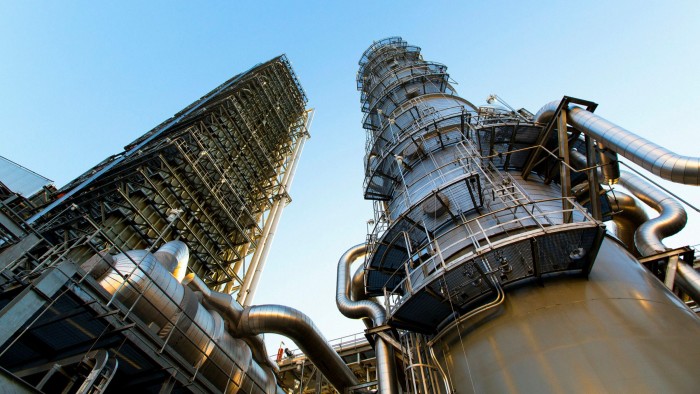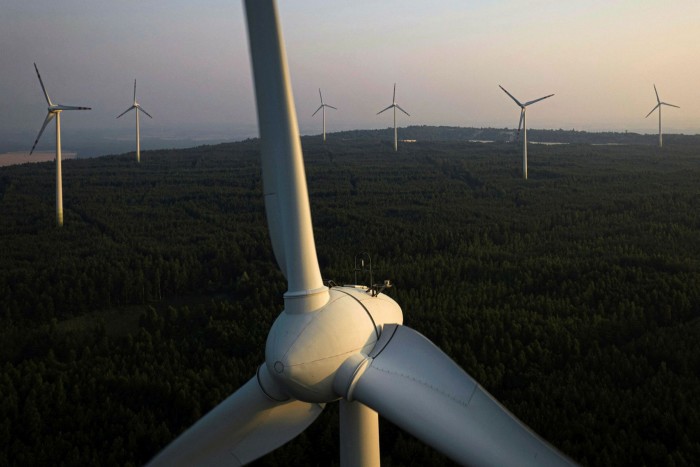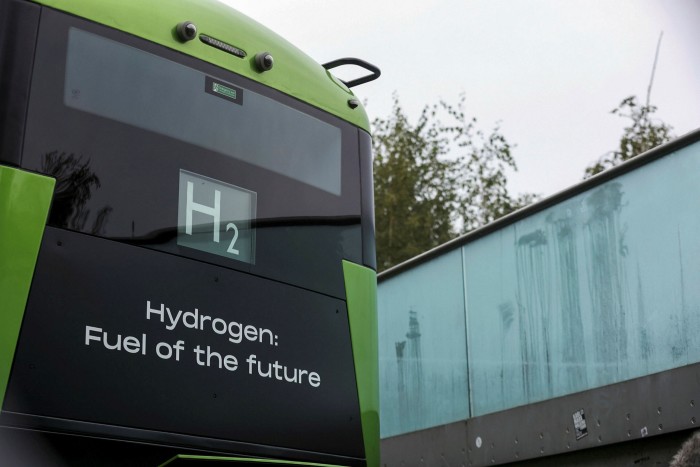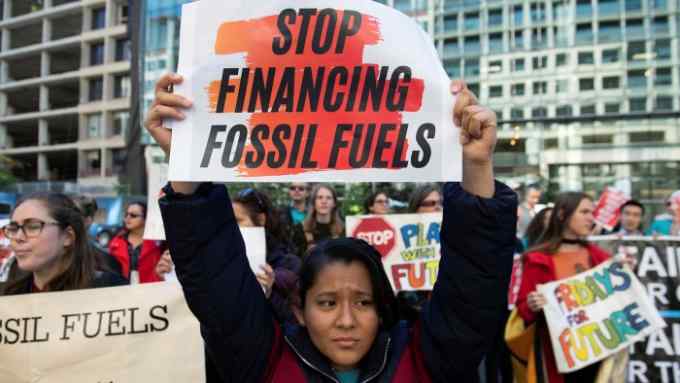Climate tech investment boom offers hope

Simply sign up to the Renewable energy myFT Digest -- delivered directly to your inbox.
As the world scrambles to slash carbon emissions, new technologies that will be critical in the fight against climate change are being backed by academics, investors and policymakers, globally.
Quirky ideas ranging from machines to suck carbon emissions from the air to trucks powered by hydrogen gas have become realistic prospects, driven by an increasing urgency to find ways to wean economies off fossil fuels and stem global warming.
“Innovation is the only way the world can cut net greenhouse gas emissions from roughly 51bn tonnes per year to zero by 2050,” wrote Bill Gates — co-founder of technology group Microsoft and, more recently, founder of climate investment group Breakthrough Energy — in the FT last October.
Under the Paris Agreement, countries agreed to limit warming to 2C — and preferably 1.5C — above pre-industrial levels, but that requires a huge reorganisation of economies away from their reliance on fossil fuel energy.

The quickest way to decarbonise in the near term is scaling up renewable energies to replace coal and gas. This will be even more important as transport and home heating become electrified.
“The biggest piece of the puzzle is to deploy at scale technologies that already exist,” says Faustine Delasalle, director of the Energy Transitions Commission. “The basis of energy transition is massive investments in wind and solar power.”
More stories from this report
Young people are on the frontline of this fight
We must pay the cost of carbon if we are to cut it
Why the greenhouse effect matters
The rise of ‘extreme weather attribution’
Carbon counting: how much do your lifestyle choices cost the planet?
Liz Thomas: my career drilling ice cores in Antarctica
Climate champions around the world
While electrification and the deployment of renewables can go a long way, for some sectors this will not be enough. Cement and steel manufacture, for instance, cannot be simply electrified and powered by renewables. Similarly, heavy duty transport — such as air travel, shipping and long haul trucking — presents a challenge.
But there is no time to wait if we are to decarbonise in time, says Kurt Waltzer, managing director at the Clean Air Task Force, a US-based environmental think-tank.
“If we don’t diversify our focus, we’re not going to be able to get to our hard-to-abate sectors,” he says. “If you’re not moving on multiple pathways, you’re putting decarbonisation at risk.”
According to the International Energy Agency, by 2050, almost half of global emissions reductions will come from technologies “currently at the demonstration or prototype phase”.
These includes approaches such as carbon capture and storage, where emissions can be prevented from reaching the atmosphere and instead buried deep underground. One advanced type of carbon capture system — known as direct air capture — strips CO2 out of the atmosphere later, after it has been emitted.
Another technology that has attracted attention in recent years is hydrogen, which can be used as a fuel and does not emit CO2 when burnt. If it is produced using renewables, it is dubbed “green hydrogen”. Advocates say it could become a huge market, worth as much as $2.5tn globally.

But the problem is that carbon capture and green hydrogen technologies are expensive. Investment and scale are required to bring down the costs so that they become economically viable prospects.
Thankfully, funds are pouring into the climate tech sector as investors race to back the next big thing, and costs are expected to decline in the coming decades.
Climate tech investment more than tripled to $60bn in the first half of 2021, compared with the same period in 2020, according to a recent PwC report. A full 14 cents out of every dollar of venture capital investment today is now allocated to the sector.
“About a trillion dollars is now pursuing the new technologies at this point in terms of venture capital,” John Kerry, the US’s top climate diplomat, told the CERAWeek oil conference in Houston this month. “There’s a lot of money now chasing this new future.”
Investors are looking to drive forward early stage innovation as well as funding brand new technologies.
One example is nuclear fusion: the forcing together of two atoms, rather than splitting them, as per the fission process used in modern power plants. Achieving fusion — the reaction that powers the sun — has confounded scientists for decades, but funds are now being pumped into the technology. Investors are hoping it could unlock a supply of clean, limitless electricity.
Experts say the best hope of keeping global temperature rises under control is to pursue an “all of the above” approach: a mass deployment of existing technology, the scale-up and commercialisation of early stage alternatives — and the pursuit of breakthrough technologies that do not yet exist.
“We have many of the technologies we need right now . . . to get us through the next 10 years,” said Kerry. “Then, over the next 10 years, things are going to happen that may even change the whole game.”

Comments